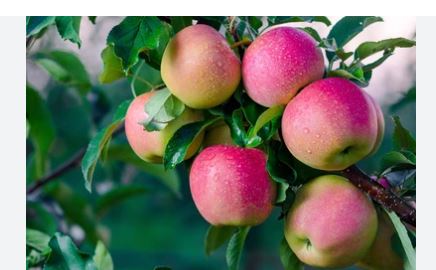
Gala apples are classified as Malus domestica, a species within the Rosaceae family, which includes other pome fruits such as pears, cherries, and quinces. The genus Malus encompasses all domesticated apple cultivars, and Gala is a specific variety resulting from a controlled cross between Kidd’s Orange Red and Golden Delicious. Developed for its dessert qualities, it’s not a wild species or hybrid genus but a cultivar bred for flavor, texture, and market appeal. This positions Gala among early-to-mid-season apples, prized for fresh eating and versatility.
Gala apples were created in 1934 by J.H. Kidd, a New Zealand orchardist in Greytown, North Island, who crossed Kidd’s Orange Red (itself a Cox’s Orange Pippin x Delicious hybrid) with Golden Delicious to combine sweetness and aromatic complexity. Named ‘Gala’—possibly after a Maori word or simply for its festive appeal—it was introduced commercially in New Zealand in the 1960s. Its popularity surged after reaching the U.S. in the 1970s, particularly in Washington State, where growers refined strains like Royal Gala (a redder sport patented in 1977). By the 1980s, it became a global favorite, now ranking among the top five apple varieties worldwide, grown extensively in North America, Europe, Australia, and South America.
Gala apples are small to medium, typically 6-7.5 cm in diameter (about 150-200 grams), with a round-to-slightly conical shape. Their skin is thin, smooth, and glossy, featuring a yellow base with vibrant orange-red striping or blush covering 50-90% of the surface, varying by strain (e.g., Royal Gala is deeper red). The flesh is creamy white, fine-grained, and crisp, encasing a small core with tiny brown seeds. They ripen early to mid-season (August-September) and store well for 3-6 months refrigerated, though crispness fades over time. The taste is sweetly dominant with mild acidity (12-14% Brix), offering a balanced flavor with hints of vanilla, pear, and floral notes, making it approachable and versatile.
Gala apple trees (Malus domestica ‘Gala’) thrive in USDA zones 4-9, suited to temperate regions with cold winters and warm summers, like New Zealand’s Hawke’s Bay or Washington’s Wenatchee Valley. They require 500-1000 chill hours (below 45°F/7°C) for dormancy and fruit set, performing best in zones 5-8 where winters dip to -20°F (-29°C) and summers reach 70-85°F (21-29°C). Early blooming (April, flower group 2-3) makes them frost-sensitive in zone 4, needing protection. They demand full sun (6-8 hours daily) and well-drained, loamy soil (pH 6.0-7.0), adapting well below 1,500 meters where heat doesn’t overly stress them.
Culinary Application of Gala Apples
- Fresh Eating: Their crisp texture and sweet, mild flavor make them perfect for raw snacking or slicing into lunchboxes.
- Salads: Thinly sliced, they add a juicy, sweet crunch to green or fruit salads, pairing well with almonds or feta.
- Baking: Baked into pies, tarts, or cobblers, their firm flesh softens while retaining sweetness, complementing spices like cinnamon.
- Sauces: Cooked into applesauce, they offer a naturally sweet, smooth base with floral undertones, needing little added sugar.
- Cheese Pairing: Their subtle vanilla notes enhance pairings with mild cheeses like gouda or sharp ones like aged cheddar.
- Juicing: Pressed into juice or cider, they yield a sweet, refreshing drink with pear-like hints, great alone or blended.
- Drying: Sliced and dried, they become chewy, sweet snacks or garnishes, ideal for trail mixes or baking add-ins.
Cultivation of Gala Apples
- Climate: Gala thrives in temperate climates with cold winters (500-1000 chill hours below 45°F/7°C) and warm summers (70-85°F/21-29°C), balancing dormancy and fruit ripening needs.
- USDA Zones: Best suited to USDA zones 4-9, excelling in 5-8 where winters reach -20°F (-29°C) and summers support flavor development. Zone 4 requires frost protection during early bloom.
- Soil: Requires well-drained, loamy soil with a pH of 6.0-7.0, enriched with organic matter. It tolerates sandy or clay soils if drainage is ensured to prevent root stress.
- Sunlight: Demands full sun (6-8 hours daily) for optimal fruit size, sweetness, and red-orange striping. Partial shade diminishes yield and color intensity.
- Planting: Propagated via grafting onto rootstocks like M9 (dwarf) or MM106 (semi-dwarf) for size control and earlier fruiting (2-4 years). Space trees 10-15 feet apart in rows 15-20 feet apart, planted in late winter or early spring.
- Watering: Needs consistent moisture—1-2 inches weekly—especially during bloom, fruit set, and summer growth (April-August). Drip irrigation prevents wet foliage; mature trees tolerate mild drought with deep watering.
- Support: Young trees require staking for 1-2 years to establish against wind due to shallow roots. Trellising or espalier systems in orchards enhance airflow and sun exposure for better fruit quality.
- Pollination: Early-blooming flowers (April, flower group 2-3) need cross-pollination with varieties like Fuji, Honeycrisp, or Granny Smith blooming concurrently. Bees are essential; place pollinators within 50-100 feet or use hives.
- Pests: Susceptible to codling moths, apple maggots, and aphids. Use pheromone traps, organic sprays (e.g., spinosad), or netting; natural predators like ladybugs help control infestations.
- Diseases: Prone to fire blight, apple scab, and powdery mildew. Prune for ventilation, apply sulfur or copper pre-bloom, and remove infected parts—rootstock choice can improve resistance.
- Harvest: Fruits ripen early to mid-season (August-September), picked when red-orange blush covers 50-90% of yellow base and flesh is firm (15-17 lbs pressure). Harvest in stages; yields 50-150 lbs per mature tree.
- Yield: Begins fruiting 2-4 years after planting, peaking at 5-10 years with 100-200 apples per tree under good care. Thin fruit (1 per cluster, 6-8 inches apart) in June to boost size and prevent biennial bearing; lifespan reaches 30-50 years.